Fecal Flotation Photos
This page shows photos of some parasites isolated from reptile fecal samples. If you suspect that your reptile has parasites you should seek the advice of a qualified reptile vet. Most parasites can be easily diagnosed and can be treated successfully and inexpensively.
Photo Providers
The photos marked courtesy of Rob Jenkins show matter isolated from the faeces of an African fat tailed gecko which was eating/defecating well. Its faeces were normal and solid and the gecko showed no signs of ill-health.
The photos marked courtesy of Paul Fisher show matter isolated from fecal samples of Standing's day geckos, Egyptian uromastyx, leopard tortoises and African fire skinks.
Pinworms
Pinworms are common in most reptilian species. Some believe that they are a natural part of the intestinal flora, perhaps even aiding digestion. In small numbers they seem to cause no harm to the host reptile, however, if present in high numbers, pin worms should be treated. If your reptile is found to have a low number of pin worms, and treatment is not required, the numbers should still be monitored as any sort of stress, or a change in conditions, may let the parasitic load increase. The pinworms shown below are all isolated from different species, however, they are all the same type of pinworm.
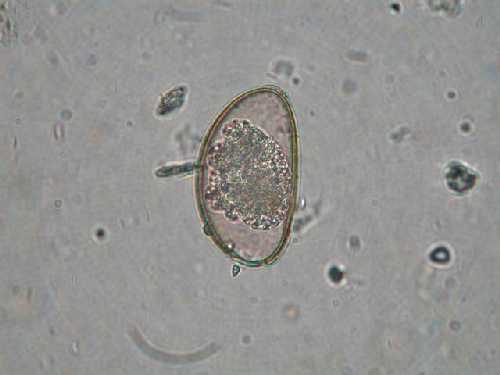 |
This photo (courtesy of Rob Jenkins) shows
a pinworm egg which was isolated from the faeces of an African fat
tailed gecko. The gecko was eating/defecating well, its faeces were
normal and solid and the gecko showed no signs of ill-health. |
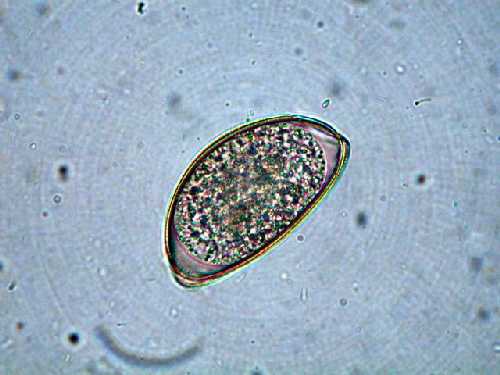 |
This is another photo (courtesy of Rob Jenkins)
of a pinworm egg. Again, the egg was isolated from the faeces of an
African fat tailed gecko. The gecko was eating/defecating well, its
faeces were normal and solid and the gecko showed no signs of ill-health. |
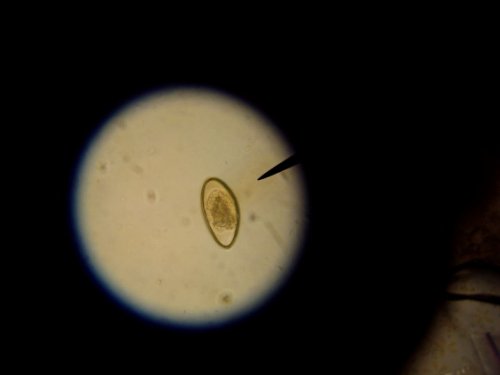 |
And another photo (courtesy of Paul Fisher)
of a pinworm egg. (Isolated from the fecal samples of Standing's day
geckos, Egyptian uromastyx, leopard tortoises and African fire skinks.) |
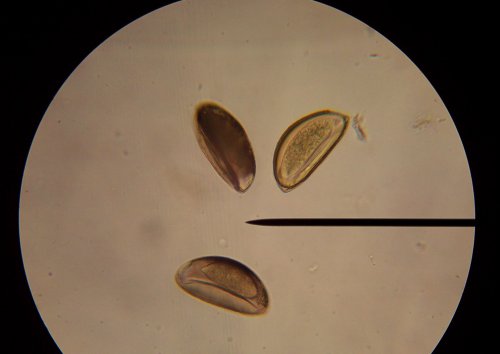 |
This is a photo of three pinworm eggs which
were isolated from the fecal sample of a leopard gecko. The leopard
gecko showed no symptoms of ill health. |
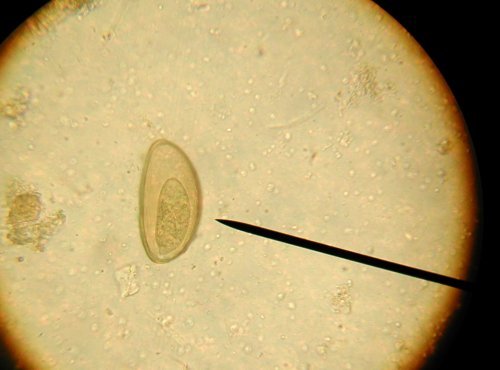 |
This is a photo of a pinworm egg which was
isolated from the fecal sample of a bearded dragon. The bearded dragon
showed no symptoms of ill health. |
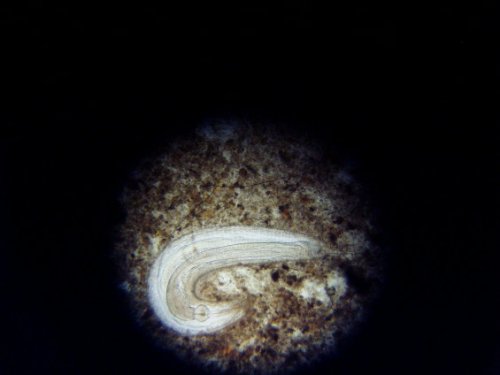 |
This is a photo (courtesy of Paul Fisher)
of an adult pinworm. (Isolated from the fecal samples of Standing's
day geckos, Egyptian uromastyx, leopard tortoises and African fire
skinks.) |
Coccidia
Coccidia are relatively common in reptilian species. In most species they can cause quite severe sickness and can be fatal in some (such as leopard geckos). However, they are a natural part of the intestinal flora of bearded dragons. In low numbers, in bearded dragons, they seem to cause no harm to the host reptile, however, if present in high numbers, they should be treated. If your bearded dragon is found to have a low number of coccidia, and treatment is not required, the numbers should still be monitored as any sort of stress, or a change in conditions, may let the parasitic load increase. The fact that coccidia are natural and cause no symptoms in one species yet can prove fatal to other species highlights the importance of good hygience practises. You should always wash your hands thoroughly in between dealing with different reptiles within your collection- and should not transfer decor (without a good wash) or uneaten food items between tanks.
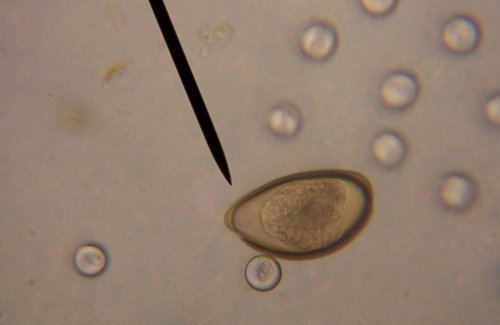 |
This photo shows coccidia (round parasites)
isolated from a bearded dragon, it also shows a pinworm egg (the black
marker is pointing at it). The bearded dragon showed no sign of ill
health, however as the coccidia load appeared to be quite high, it
was treated to reduce the coccidian numbers. |
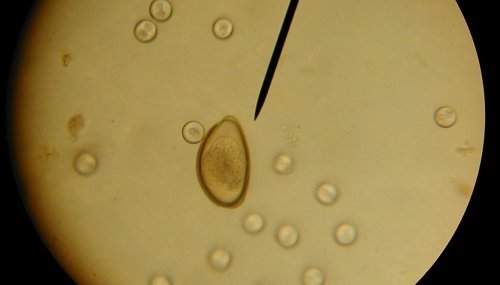 |
This photo shows coccidia (round parasites)
isolated from a bearded dragon, it also shows a pinworm egg (the black
marker is pointing at it). The bearded dragon showed no sign of ill
health, however as the coccidia load appeared to be quite high, it
was treated to reduce the coccidian numbers. |
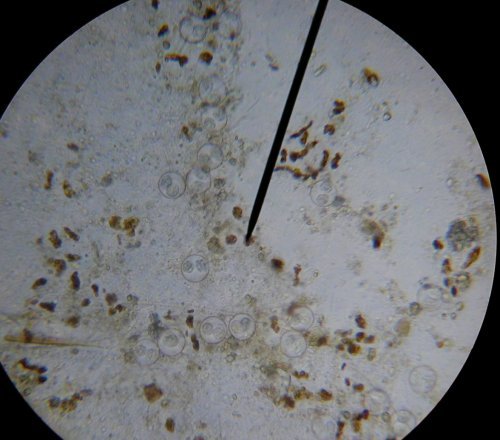 |
This photo shows coccidia from a bearded dragon.
The bearded dragon showed no sign of ill health, however as the coccidia
load appeared to be quite high, it was treated to reduce the coccidian
numbers. |
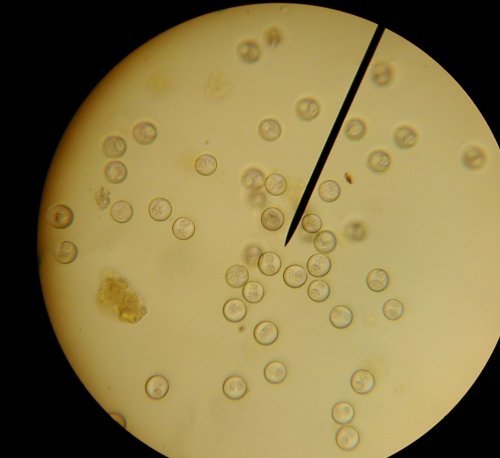 |
This photo shows coccidia from a bearded dragon.
The bearded dragon showed no sign of ill health, however as the coccidia
load appeared to be quite high, it was treated to reduce the coccidian
numbers. |
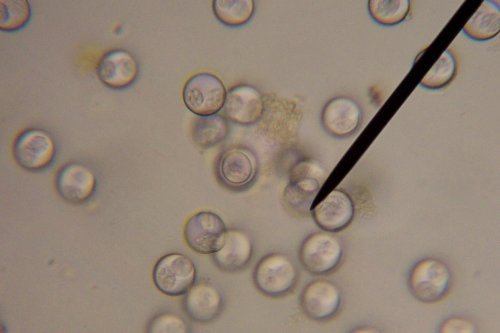 |
This photo shows coccidia from a bearded dragon.
The bearded dragon showed no sign of ill health, however as the coccidia
load appeared to be quite high, it was treated to reduce the coccidian
numbers. |
Tapeworms
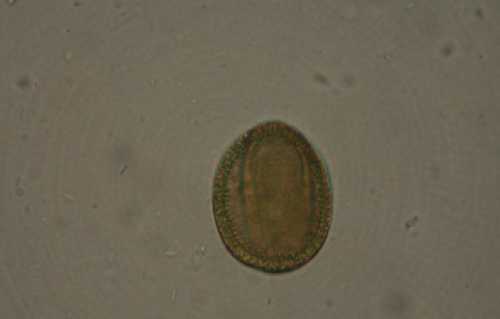 |
The matter in this photo (photo courtesy of
Rob Jenkins) is most likely a tape worm egg. It was isolated from the
faeces of an African fat tailed gecko. The gecko was eating and defecating
well, its faeces were normal and solid and the gecko showed no signs
of ill-health. |
Other Matter
Obviously, there will be other matter present in the fecal matter such as undigested plant and insect parts as well as a few surprises such as cricket eggs!
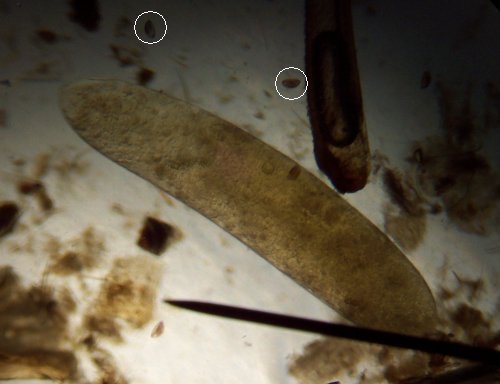 |
This photo shows a cricket egg (not a parasitic
egg). The crickets can lay their eggs in the feces after it is passed.
The cricket eggs are huge in comparison to the pinworm eggs (ringed) |
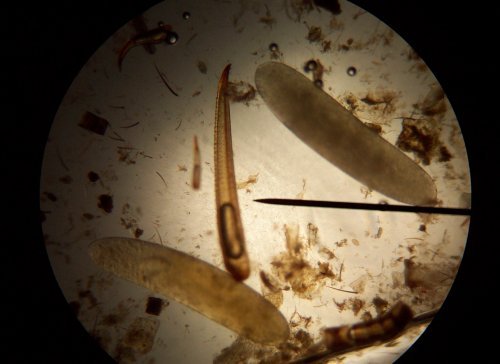 |
This photos shows two cricket eggs, and a
spine from a cricket. |
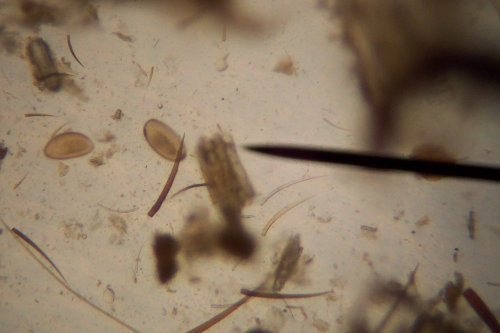 |
This photo shows lots of spiny cricket parts,
as well as 2 pinworms eggs. |
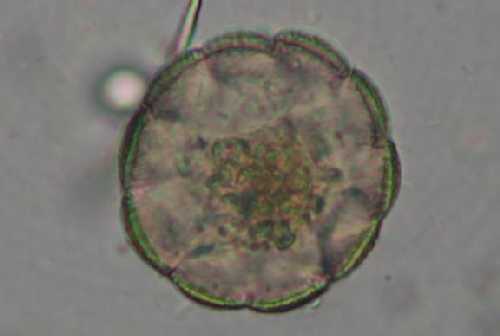 |
The matter in this photo (photo courtesy of
Rob Jenkins) is possibly of plant origin. Rob suggested it could be
spirulina (as it is possible that the previous owner of the gecko had
been gutloading the crickets with spirulina). |
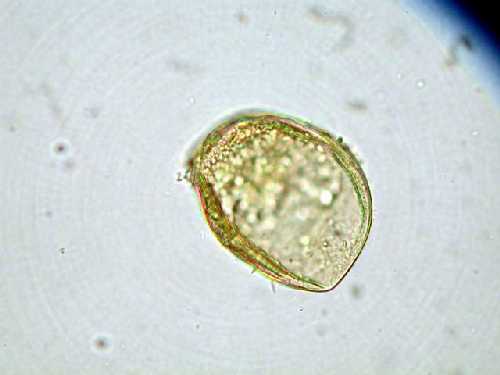 |
The matter in this photo (photo courtesy of
Rob Jenkins) is probably a cricket part, I would guess it might be
the cap of an eye. |
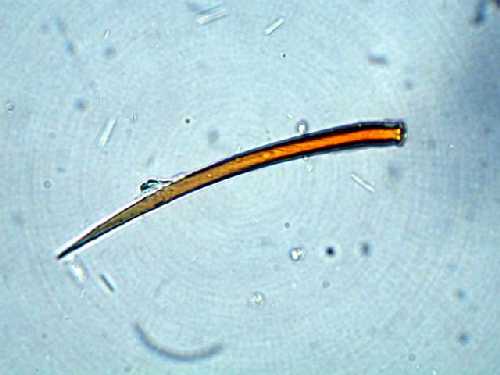 |
The matter in this photo (photo courtesy of
Rob Jenkins) is probably another cricket part, I would guess it is
a leg part. |
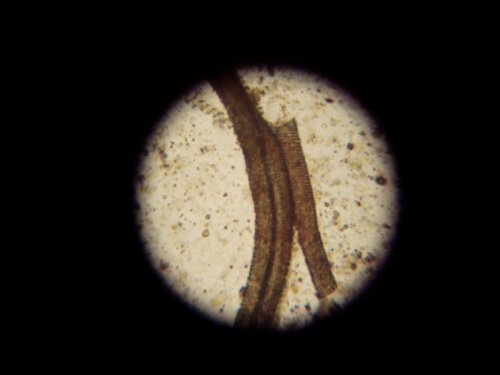 |
This photo (courtesy of Paul Fisher) shows
vegetative spirals, part of the plant vascular system. |
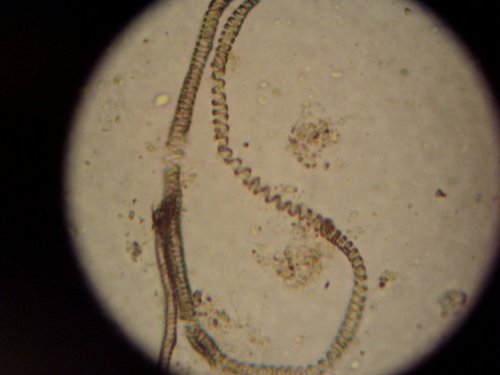 |
This photo (courtesy of Paul Fisher) also
shows vegetative spirals. |
This page shows photos of some parasites isolated from reptile fecal samples. If you suspect that your reptile has parasites you should seek the advice of a qualified reptile vet. Most parasites can be easily diagnosed and can be treated successfully and inexpensively.
